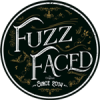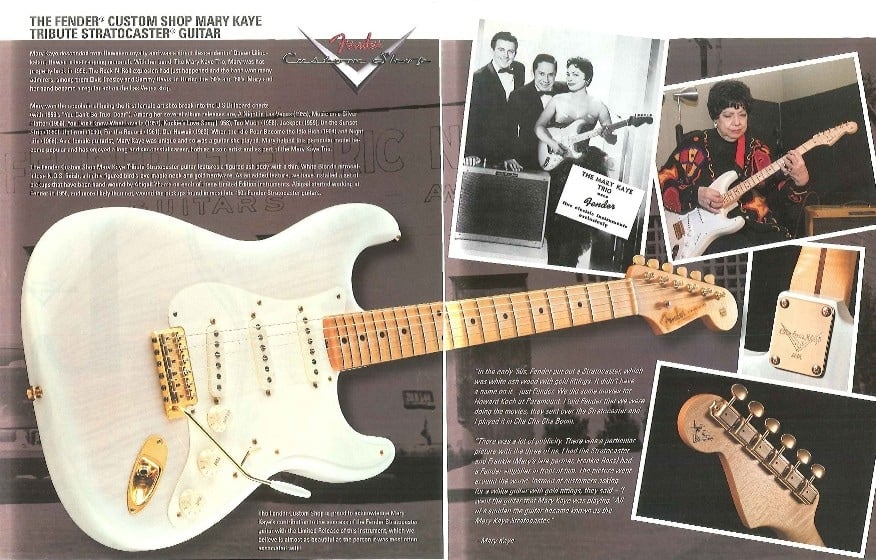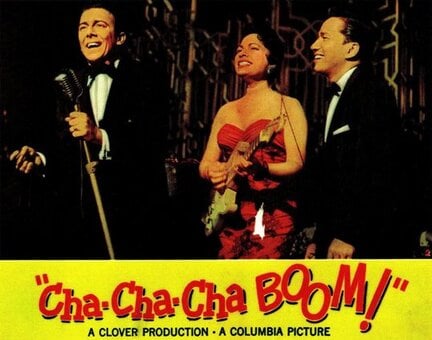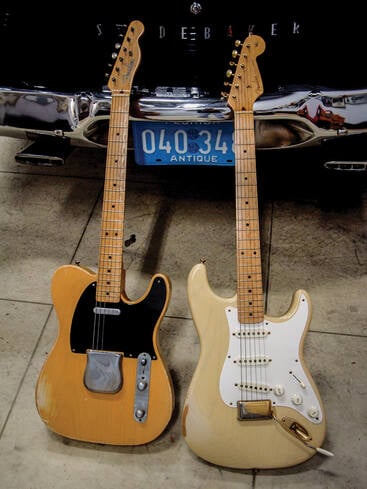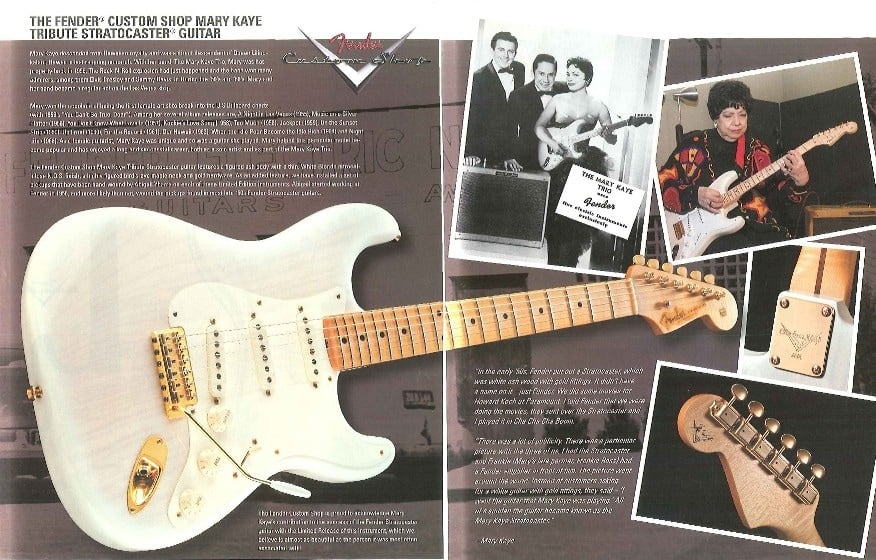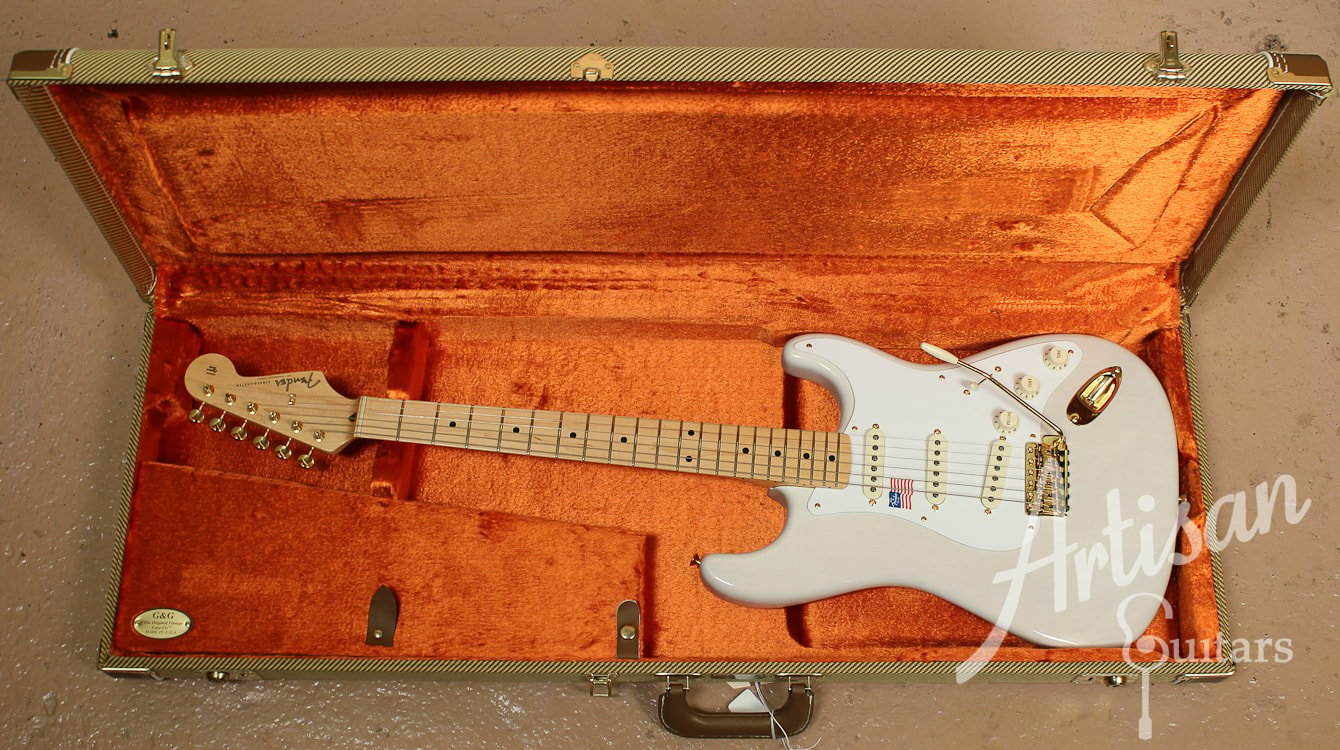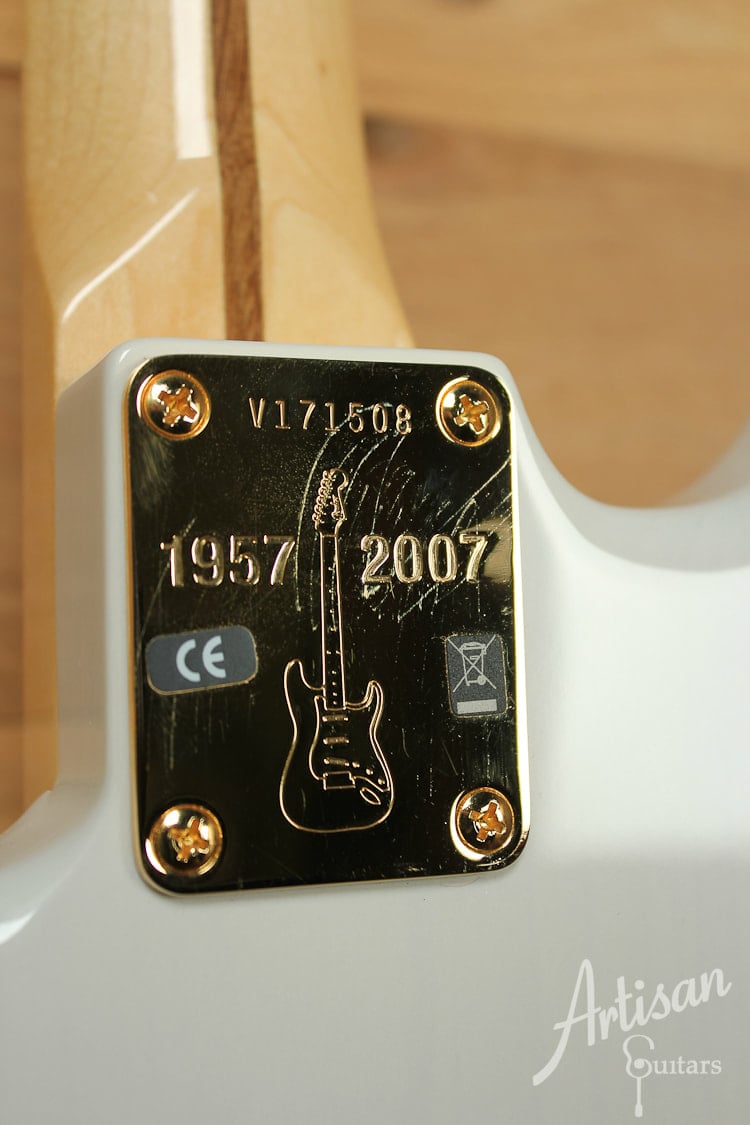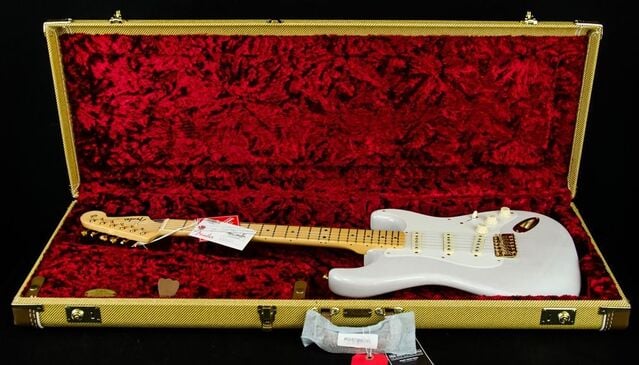tHE oRIGINAL mARY kAYE sTRATOCASTER
|
Mary Ka'aihue was a guitarist of Hawaiian origin who changed her surname to Kaye because only a few could pronounce "Ka'aihue" correctly and because everyone assumed she played Hawaiian music, while actually she was a skilled jazz musician.
She was nicknamed "the first lady of rock'n'roll" since she posed for the Fender catalog in 1956 with a blonde Stratocaster with gold-plated hardware, and it has gone down in history with her name. The guitar in the photo, currently owned by a collector, serial number 09391, featured a body dated January 1956, while the neck had been factory replaced with one dated September 1956. |
The strange thing is, that in that period Kaye didn’t play a Stratocaster, but an archtop guitar built for her by John D'Angelico. However she took up the Stratocaster for a few minutes for the filming of the 1956 film "Cha-Cha-Cha Boom!" and for the historical advert of the same year wanted by Don Randall. The guitar was returned to the Fender factory after short use.
But now all the ’50s style blonde Stratocasters with golden hardware were nicknamed "Mary Kaye" – and perhaps this can be considered, unofficially, the first case of signature in Fender's history!
But now all the ’50s style blonde Stratocasters with golden hardware were nicknamed "Mary Kaye" – and perhaps this can be considered, unofficially, the first case of signature in Fender's history!
THE FIRST ONE-OFF REPLICAs
|
In 1987 John Page, in the newborn Custom Shop, made for his friend Elliot Easton a Mary Kaye strat on which his colleague Michael Stevens also collaborated. It was a '57s style ash body Stratocaster, with a blonde finish and a bird's eye neck, serial number "0008", delivered on July 17, 1987. John considered it his first Custom Shop guitar, though actually other five instruments had left Fender, but the Master Builder considered these “marketing's mix-and-match kind of stuff we had to do for shows, or the Japanese re-paint.”
This was followed by many other '50s style blonde Custom Shop strats with golden hardware, but none of these was an official “Mary Kaye” model: they were only one-off Stratocasters. Towards the end of 1994 Vince Cunetto made a Mary Kaye Relic Stratocaster, which was put on display inside a showcase at NAMM in 1995 together with a Nocaster Relic, suggesting that they were really two old collectible guitars. None realized the trick and, finally, when the real nature of the two instruments was revealed, Fender received hundreds of orders. But it wasn’t still an official May Kaye model. |
The official mary kaye strats
To see the first official Kaye tribute Stratocaster we would have to wait until 2005, when Fender asked Greg Fessler to build sixty units of the Kaye Tribute Stratocaster, after which other units made by other master builders followed in the same year. The ash body was covered by a thin semi-transparent nitro finish with light checking, the radius of the fretboard was 7.25", the plastics were aged and the hardware was obviously golden. Finally the pickups were wound by Abigail Ybarra. It is interesting to note that the 2005 Frontline reported a N.O.S. finish, but among the specs it was correctly indicated as a Closet Classic.
When Mary Kaye died, two years after the birth of her Tribute, at the age of 83, Fender made a ’57 reissue dedicated to her, the American Vintage 1957 Commemorative Stratocaster. Aside from the finish and “1957 to 2007” commemorative neck plate, it was in all respects an American Vintage: “V” shaped neck, radius 7.25", Original ’57/’62 pickups, and serial number on the neck plate starting with “V”.
In 2019 Fender celebrated again the first lady of rock 'n' roll with the Limited Edition American Original '50s Stratocaster Mary Kaye White Blonde. This guitar featured a "Mary Kaye" White Blonde color, elegant gold hardware and an eggshell pickguard, giving you that classic fifties aesthetic with all of the modern improvements of the American Original Series you could ask for. The body was in chambered ash, as response to the light ash supply issue due to the increased flooding of the Mississippi Delta, where Fender got most of its swamp ash wood, and to ash tree destruction caused by the Emerald Ash Borer, an invasive beetle native to Asia that spread down from Canada and was highly destructive to the North American ash tree. Regarding this problem Justin Norvell said: “We’ve started looking at ash that’s a little heavier and working on different chambering techniques that would allow it not to be 12 or 13 pounds.”
Antonio Calvosa
